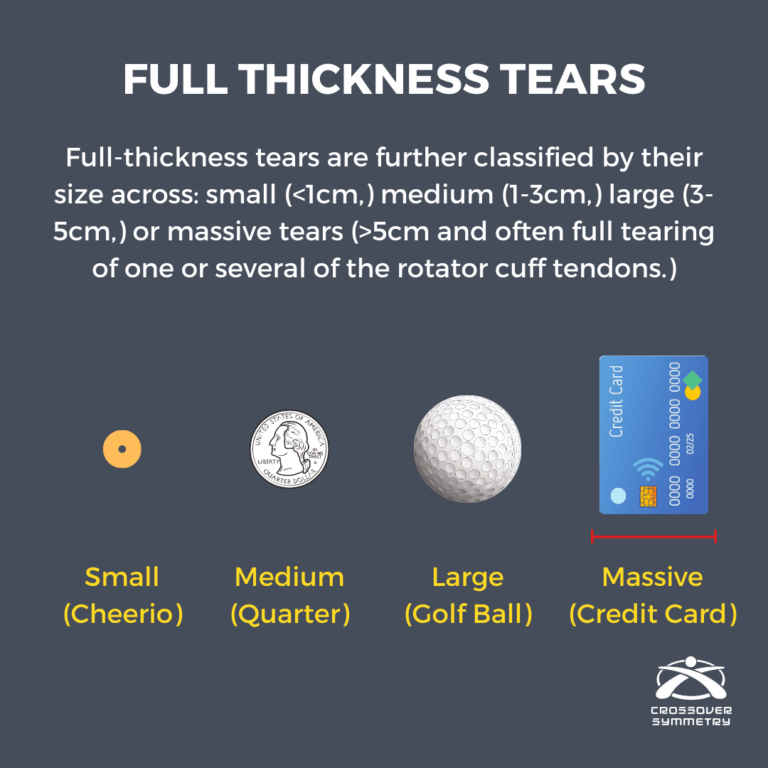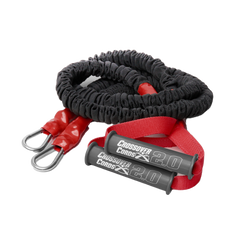Over the last few weeks, I’ve been covering a series called #rotatorcuffrehab.
It stems from the many questions I receive about rotator cuff tears and wondering if Crossover Symmetry could be the magic cure and help them avoid surgery.
Of course, there is no guarantee.
For many people, Crossover Symmetry is a slam dunk. It removes the pain holding them back and helps them get a good night’s sleep at a comparatively low cost of time and money.
Others may need surgery or other medical work to solve the issue. I’m hopeful that the #roatorcuffrehab series will help make informed patients when dealing with their pain. The series is ongoing on our Instagram with citations, but take a look at the factors we’ve covered. These are often what’s looked at first—but honestly, they’re not always the most important.
(As a side note, I’m not anti-medicine. Surgery often provides remarkable outcomes that allow people to return to their favorite activities pain-free. Although, for the cost, risks, and recovery time, I believe it’s worth avoiding if possible.)
Size
When people talk about their injury, they usually focus on the size or extent of the damage. While there is a pattern that larger tears tend to be more limiting, it’s not the end to determine the best course of action.
Rotator cuff tears are first differentiated based on depth and width. A hole can form from either the top or bottom, usually classified as a depth of more or less than 50%. For tears that have made a full hole (full thickness), it’s further classified as small (<1cm,) medium (1-3cm,) or large (3-5cm.) For reference, a centimeter is about the size of a Cheerio.
There is another classification called a massive rotator cuff tear. These are greater than 5cm and involve the complete tearing of one or several of the rotator cuff tendons.
People with partial, full-thickness, and even massive cuff tears may be effectively treated nonoperatively through a progressive program of strength and mobility work.

Age & Mechanism
I lumped these together because they often go hand in hand.
Over time, the rotator cuff ages like all other tissues in the body. And like the fibers to an old pair of blue jeans, it can become thin and worn and more prone to tearing. This degenerative rotator cuff tear is most common in older individuals, whereas the tear that occurs hucking jumps at the terrain park is more common among younger folks.
The difference with a chronic tear is that the body has had time to create a support structure through muscle compensations and scar tissue, and they can also be hard to repair surgically. The great news is, people in this category do very well without surgery and respond well to strengthening.
In contrast, the acute tear creates immediate and drastic changes to the anatomy and function and usually has other damage that makes rehab hard. The big point here is that acute tears, especially in younger people (under 40), should at least get evaluated for surgery.
Is Your Head in The Game?
I haven’t covered this one yet, but I’ll give you a sneak peek: One of the most important factors may simply be one’s perspective.
An interesting study followed people with an asymptomatic rotator cuff tear that had been determined by ultrasound, and then tracked them over time to see who ended up getting surgery.
The first interesting point is that many people live with this type of tear without pain or symptoms to lead them to believe anything is wrong.
The second interesting point is that the factors determining who ended up having surgery were not related to the physical tear. The study found no association between the tear’s type, size, or development.
Instead, what appeared to matter most was the patient’s perception of pain and their injury. The following are the things that were the best predictors of needing surgery:
- How bad is the pain?
- How quickly did pain onset after the initial exam?
- The need for painkillers
- Did they have shoulder surgery previously?
- Ratings of limitation
It’s easy to process these data as an injury that hurts more and is more limiting is more likely to get surgery. Although, that doesn’t address why the injury is more limiting.
We now get to the complex issue of pain—and as we’ve talked about previously, it’s a perception of the brain. And it may come down to the direction for best managing a degenerative rotator cuff is mental rather than physical.
Thus, the most significant impact that Crossover Symmetry can offer someone with a rotator cuff tear is less catastrophizing. It equips people with a plan of attack that reduces pain and improves motion that they can do on their own, and I think that empowering someone for success is important to change one’s perception.
I look forward to diving into this with you further!

 Shoulder Packages
Shoulder Packages
 Hip & Core Package
Hip & Core Package
 Bundles
Bundles
 Accessories
Accessories




















